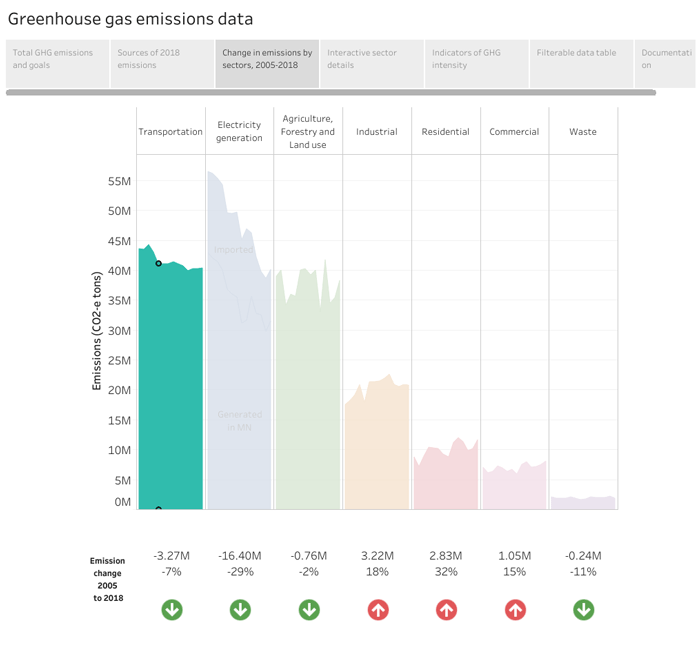Pollutants and greenhouse gas emissions
The region works to reduce transportation’s contribution to air pollutants and greenhouse gas emissions as it makes investments, particularly supporting transportation options like carpooling, transit, biking, walking, and shipping freight by rail or barge. More efficient land use and development patterns also help lower pollutant and greenhouse gas emissions.

All these efforts are a starting point for a broader conversation with local, regional, state, and federal partners about making more sustainable decisions toward better air outcomes.
Transportation has an enormous impact on air quality. The region’s transportation-related emissions account for:
- 68% of carbon monoxide emissions
- 40% of nitrogen oxide emissions (toxic by itself and an ozone precursor)
- 32% of volatile organic compound emissions
- 5% of particulate matter (small particles of pollution in the air that can be inhaled)
In November 2019, the Twin Cities region went into attainment for carbon monoxide air quality, which means the region has met or done better than the National Ambient Air Quality Standards for more than 20 years. Reaching attainment places a renewed focus on all transportation-related emissions. Along with carbon monoxide, air pollutants like ozone and particulate matter continue to affect the people’s health.
The Environmental Protection Agency has designated a small part of the Twin Cities region as a maintenance area for coarse particulate matter. A map of this area is included in Appendix E. While the region has not exceeded the federal standards for fine particulate matter and ozone concentrations, current concentrations of those pollutants in the region reach 80% of standards.
Additionally, transportation accounts for one quarter of statewide greenhouse gas emissions, contributing to global climate change. The region supports state efforts related to the Next Generation Energy Act to reduce all greenhouse gas emissions to 80% below 2005 levels by 2050. In addition, the state announced in 2019 two new clean car standards to reduce vehicle emissions in our state. The low-emission vehicle (LEV) standard and the zero-emission vehicle (ZEV) standard.